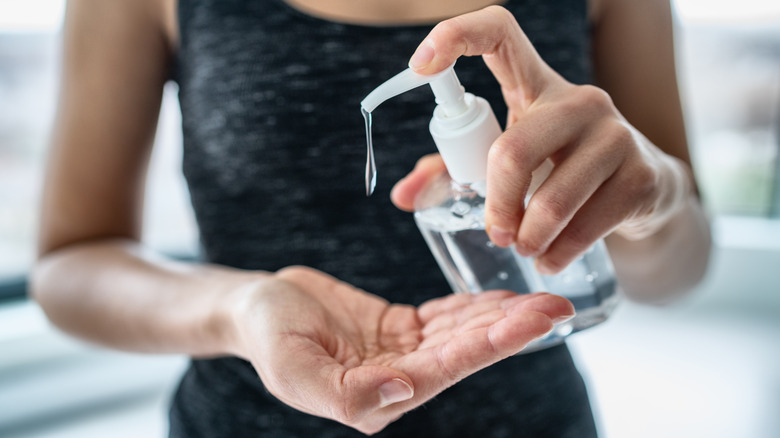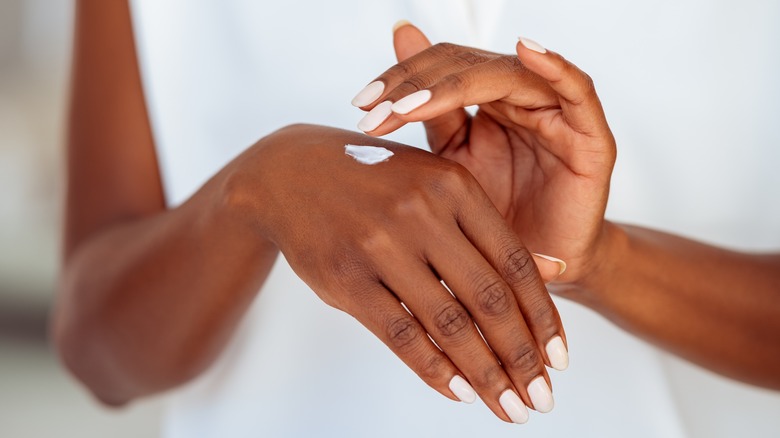The One Simple Step To Keep Hand Sanitizers From Drying Out Your Skin
Remember the great panic of March 2020, when supplies of hand sanitizer ran low (per The New York Times)? It was the beginning of the COVID-19 epidemic in the United States, when we all became hyper-aware of germs and diligent about keeping clean. In addition to wiping down groceries and wearing face masks everywhere, medical experts advised regular hand-washing or using sanitizer to avoid becoming ill or spreading the virus.
Thankfully, we now have effective and widely available vaccines and antivirals, which have allowed us to return to work, school, and social events without the paralyzing fear of two years ago. Hand sanitizer is also back in stock, and medical experts still advise using it in cases when there's no access to soap and water. The convenience of sanitizer has a price, however. The same alcohol that blasts germs can also leave your hands dry, rough, and otherwise unsightly.
Just as your lips get dehydrated after wearing a face covering for hours (yes, you need to wear lip balm under your face mask), your skin can feel the effects of having an alcohol-based cleaner rubbed in several times a day. The one big mistake people make when using hand sanitizer is not replacing the moisture on their hands afterward.
The sanitizer itself isn't always to blame for dry skin, per Gojo. But any action involving the hands — washing dishes, sunbathing, swimming in the pool — can leave the skin's outer layer dry and damaged, leading to an increased risk of infection.
Don't forget to moisturize your hands after using sanitizer
The Centers for Disease Control and Prevention (CDC) affirms that hand-washing is one of the easiest and most effective ways to avoid the spread of germs — COVID-related and otherwise. Washing reduces the incidence of illnesses such as colds and helps address the issue of antibiotic resistance by making it less necessary for doctors to prescribe antibiotics.
Soap and warm water are best, but the CDC recommends using a hand sanitizer containing at least 60% alcohol in cases where a sink and soap aren't available. When you do opt for hand sanitizer, don't forget to apply a moisturizing hand cream afterward. This coats the outer skin layer and protects against the drying and cracking that can allow germs to penetrate.
The American Academy of Dermatology (AAD) has additional advice: Make sure the sanitizer is completely absorbed into your skin before applying the moisturizer. If you're washing with soap and water, however, it's best to leave your hands slightly damp while you apply cream to seal in the moisture.
It can be daunting to choose from the large variety of skin moisturizers on store shelves and online, but Mind Body Green recommends checking for ingredients such as botanical butters and oils (like shea butter and jojoba oil) as well as beneficial antioxidants.

